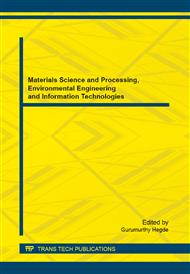p.698
p.706
p.712
p.718
p.724
p.733
p.739
p.745
p.751
Study on the Optimal Image Resolution for Image Segmentation
Abstract:
Resolution is one of the basic and key indexes on assessing the quality of remote sensing image. However, it can not be concluded that the higher the image resolution, the better the segmentation result, since high resolution image contains not only more details of interested object, but also more redundant information of background which causes much difficulty on image segmentation and target recognition. To determine an optimal image resolution for image segmentation, an image pyramid with resolution continuously changing is built by down sampling and super-resolution techniques at first, and then an index called degree of image segmentation is presented based on the image histogram. Degree of image segmentation is a hybrid index which is designed based on integrating the area and symmetry of the valley of the image histogram. At last the optimal image resolution is determined by seeking the maximum value of degree of image segmentation from the images with different resolutions contained in the image pyramid. The experimental results illustrate that degree of image segmentation is directly related with the result of segmentation, and the degree of image segmentation presented in this paper is a good index to describe how well an image can be segmented in the viewpoint of quantitative and qualitative assessing.
Info:
Periodical:
Pages:
724-732
Citation:
Online since:
October 2014
Authors:
Price:
Сopyright:
© 2014 Trans Tech Publications Ltd. All Rights Reserved
Share:
Citation:


